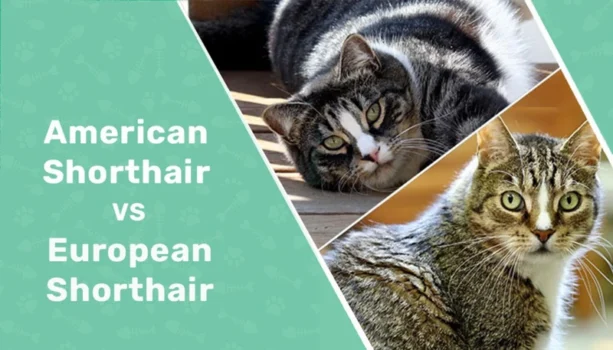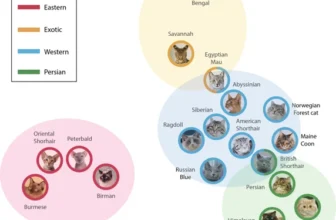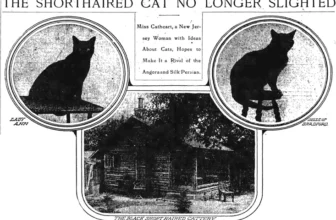From the sleek and refined European Shorthair to the hardy and beloved American Shorthair, cats have captured the hearts of people for centuries. However, little is known about the fascinating influence that European Shorthair cats have had on the ancestry of American Shorthair cats. This has led to much intrigue and curiosity among cat lovers and breeders alike. In this article, we delve into the histories and characteristics of both breeds, explore their differences and similarities, and examine the impact of crossbreeding with other cat breeds. Join us on this journey of discovery into the rich lineage and development of these beloved feline companions.
European Shorthair Cats
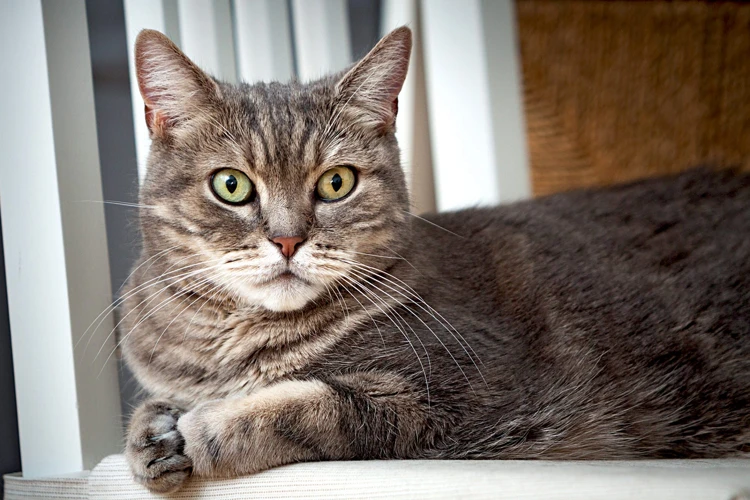
The history of domesticated cats is a long and fascinating one, filled with tales of migration, adaptation, and interbreeding. The European Shorthair cat is a prime example of a feline breed that has left its mark on the ancestry of American Shorthair cats. These cats have a storied past, with a unique set of characteristics and traits that make them stand out from other breeds. In this section, we will explore the origins and migration of European Shorthair cats, as well as their influence on the development of American Shorthair cats. For more information on the evolution of American Shorthair cats, check out our comparison of the breed with other cats.
Origins and Characteristics
European Shorthair Cats have a long and storied history, dating back to the ancient Egyptian era. They are a breed that has evolved over time, with various influences and adaptations along the way. In contrast, American Shorthair Cats are a more recent breed, with their origins tracing back to the early days of the American colonies.
Origins
European Shorthair Cats are believed to have originated from the African Wildcat, which was domesticated by the ancient Egyptians. As trading routes expanded, so did the spread of these cats throughout Europe. Over time, they were bred with other feline breeds, resulting in the diverse range of coat colors and patterns seen today.
Characteristics
European Shorthair Cats are known for their robust, muscular build, and their short, dense coat. They typically have a round, broad head, and their eyes come in a range of colors. They are friendly and adaptable, making them suitable pets for households with children and other animals.
In comparison, American Shorthair Cats have a more athletic build, with a round head and expressive eyes. Their coat can come in a range of colors and patterns, and they have a friendly, easy-going temperament.
Diversity of American Shorthair Cats
While European Shorthair Cats have a diverse genetic ancestry, the American Shorthair breed has been developed primarily through selective breeding. This has led to a relatively homogeneous genetic profile, which has had both advantages and disadvantages. On the one hand, it has allowed for the development of breed standards and recognition by various cat councils. On the other hand, it has also led to a reduced genetic diversity, which can lead to health problems down the line.
For more information on the genetic ancestry and development of American Shorthair Cats, check out our article on genetic ancestry.
Migration to America
European Shorthair Cats migrated to America with settlers and immigrants in the 17th and 18th centuries. According to records, the first cats came to Jamestown, Virginia, in 1609 aboard the ship “The Good Ship” owned by Englishman Christopher Newport. Over the next two centuries, more European Shorthair Cats were brought to America by European immigrants, both intentionally and unintentionally on ships.
The cats played a significant role in early American society. They were valued for their ability to control rodent populations, which were common aboard ships and in homes and businesses. In fact, the value of cats for rodent control was so great that many ship captains would not leave port without them.
As America grew and expanded, so did the number of European Shorthair Cats. These cats interbred with local feline populations, resulting in the American Shorthair Breed we know today. The breed was recognized by the Cat Fanciers’ Association (CFA) in 1906.
To better understand the influence of European Shorthair Cats on the ancestry of American Shorthair Cats, we can compare the physical and behavioral traits of the two breeds.
| Cat Breed | Origin | Physical Characteristics | Behavioral Characteristics |
|---|---|---|---|
| European Shorthair | Europe | Short, dense coat; variety of colors and patterns | Intelligent, independent, active |
| American Shorthair | United States | Short, thick coat; variety of colors and patterns | Friendly, adaptable, active |
As we can see from the table, while the two breeds share many physical traits, there are some behavioral differences that have developed over time. American Shorthairs are known for being friendlier and more adaptable than their European counterparts. This may be due to their breeding, which focused on creating a cat that was not only a great mouser, but also a good companion.
The migration of European Shorthair Cats to America played a crucial role in the development of American Shorthair Cats. The infusion of European genes led to the creation of a unique and adaptable breed that has become an important part of American culture. To learn more about the evolution and traits of American Shorthair Cats, check out this article on the history of the breed.
Influence on American Shorthairs
The European Shorthair cats are known to have played a significant role in the evolution of American Shorthair cats. Over time, the American Shorthair breed has undergone several modifications and adaptations in line with their environment, food, and habitat. Below are some of the ways European Shorthair cats have influenced American Shorthairs:
1. Genetic Diversity: One of the most significant impacts that European Shorthair cats have had on the American Shorthair breed is the introduction of genetic diversity. When the European Shorthair cats migrated to America, they brought about an infusion of new genes into the American Shorthair gene pool. This has made the American Shorthair breed much stronger, healthier, and better adapted to their environment.
2. Physical Characteristics: The European Shorthair cats have also had an impact on the physical appearance of the American Shorthair cats. The American Shorthair cats that are descendants of the European Shorthair cats have a finer coat texture and softer fur. These traits are commonly seen in both breeds, showing some similarities in physical appearance.
3. Behavior: The American Shorthair cats also inherited some behavior traits from the European Shorthair breed. They are generally independent and docile, traits that are seen in their European counterparts. Although American Shorthairs have adapted to a new environment, they still retain some of their ancestral behavior patterns.
This blending of traits from two different cat breeds has helped shape the American Shorthair cat breed into what it is today. While the American Shorthairs have evolved over time, they still retain some characteristics of the European Shorthair cats that they descended from.
If you want to learn more about the evolution of the American Shorthair breed, read our article American Shorthair Breed Evolution.
American Shorthair Cats
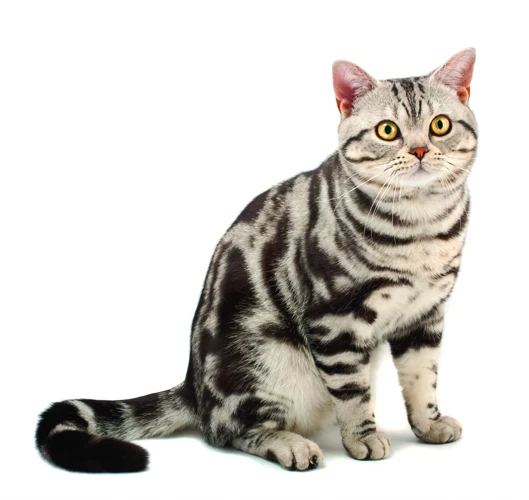
The American Shorthair cat breed is a beloved feline breed that has been a favorite in homes across America for decades. These cats are known for their muscular build, short coat, and friendly disposition. Unlike some cat breeds, American Shorthairs are known for their adaptability and easy-going nature, making them a great choice for families with children and other pets.
One of the most unique characteristics of American Shorthair cats is their ancestry. These cats were originally brought to America by European settlers in the 1600s, alongside other domesticated animals such as cattle and horses. They were bred with local cats, creating a distinct American breed with a diverse genetic makeup.
Despite their mixed ancestry, American Shorthairs have developed into a distinctive breed with their own set of characteristics and traits. Let’s take a closer look at the origins, development, and adaptations of this popular feline breed.
If you want to learn more about the evolution of American Shorthair cats, click on this link to read an in-depth article on the topic.
Origins and Characteristics
The European Shorthair cat is one of the oldest cat breeds and has a long and interesting history. They are believed to have originated in Egypt and were commonly found in the streets and alleys of ancient cities. Over time, they spread throughout Europe and became recognized as a distinct breed.
Characteristics: European Shorthair cats have a medium-sized body with short and thick fur. They have a round head, large and expressive eyes, and a muscular body. European Shorthair cats come in a variety of colors, patterns, and coat lengths. They are known for their playful and adventurous personalities, as well as their intelligence and loyalty.
The American Shorthair cat, on the other hand, is a breed that was developed in America from European Shorthairs. They were originally bred to control rodents and vermin in the early American colonies.
Characteristics: American Shorthairs have a medium to large-sized body and short, dense fur. They have a round head and expressive eyes that range in color from blue to gold. The coat colors and patterns of the American Shorthair are diverse, but the most popular is the classic silver tabby. American Shorthairs are known for their gentle and outgoing personalities as well as their adaptability to various lifestyles.
While the two breeds have some similarities in appearance and personality traits, there are also some distinct differences. For example, European Shorthairs tend to be more independent and less affectionate than American Shorthairs, while American Shorthairs are more social and love being around people.
| European Shorthair | American Shorthair |
|---|---|
| Origins: Egypt and spread throughout Europe | Origins: Developed in America from European Shorthairs |
| Body Size: Medium | Body Size: Medium to Large |
| Coat: Short and thick | Coat: Short and dense |
| Coat Colors and Patterns: Varied | Coat Colors and Patterns: Diverse, with silver tabby being the most popular |
| Personality: Playful, adventurous, intelligent, and loyal | Personality: Gentle, outgoing, and adaptable to various lifestyles |
It is important to note that both breeds have contributed to the genetic diversity of cats, which has impacted the evolution and development of the American Shorthair breed. To learn more about the impact of domestication on American Shorthair cats’ evolution, visit this article. Alternatively, for more information on the genetic diversity of American Shorthair cats, check out this article.
Development of the Breed
The development of the American Shorthair cat breed occurred over several centuries, beginning with European Shorthairs brought to America by colonists.
17th and 18th century: In the early years, these cats served as valuable pest control agents on ships and in homes. They were also used to protect food stores from rodents. The breed gradually adapted to the North American environment, with thicker fur and stronger bodies.
19th century: The American Shorthair breed was recognized in its own right in the 1900s as show cats began to emerge. They were bred for their looks and temperament, resulting in a wider array of coat colors and patterns. The breed was also crossed with British Shorthairs to enhance its physical characteristics.
20th century: In the early 1900s, breeding programs were initiated to create a consistent breed standard and prevent further crossbreeding. The Cat Fanciers’ Association recognized the American Shorthair in 1904.
21st century: Today, the breed is recognized for its friendly nature and versatility, excelling in both show and home settings. Breeders continue to strive for healthy and well-tempered American Shorthairs, while maintaining the breed’s unique characteristics.
Here is a table highlighting the major milestones in the development of the American Shorthair breed:
| Century | Major Developments |
|---|---|
| 17th and 18th | Pest control and protection; adaptation to environment |
| 19th | Show cats emerge; breeding for looks and temperament; crossbreeding with British Shorthairs |
| 20th | Initiation of breeding programs for consistent breed standard; recognition by Cat Fanciers’ Association |
| 21st | Continued breeding for health and temperament; recognition as versatile show and home cats |
Adaptations and Changes over Time
The American Shorthair cat has undergone many adaptations and changes over time, which has helped to improve and refine the breed. Here are some of the most notable aspects of the breed that have changed over time:
- Size: The American Shorthair was originally a larger cat when it was first brought to the United States in the early 1900s. However, over time, breeders focused on reducing its size to create a more agile and versatile companion animal.
- Coat: The American Shorthair has always had a short, sleek coat, but the exact texture and coloration of the coat has evolved over time. The breed now comes in a wide variety of colors and patterns, including silver, blue, red, and cream.
- Temperament: American Shorthairs have always been known for their friendly and affectionate personalities, but their overall temperament has become more refined over time. Breeders have worked to produce cats that are not only outgoing and playful, but also intelligent and trainable.
- Health: The American Shorthair is a generally healthy breed, but there are certain health issues that have been observed more frequently in recent years. For example, some cats may be prone to obesity or dental problems, which breeders are working to address through selective breeding and improved healthcare practices.
- Recognition: Finally, the American Shorthair has undergone changes in terms of its recognition and status within the cat breeding world. Initially considered to be a “working cat,” the breed has since become more popular as a companion animal and has earned recognition from various cat breeding associations.
These adaptations and changes over time have helped to shape the American Shorthair into the beloved and versatile breed that it is today. By taking care to address any potential health issues, refine the breed’s temperament and personality, and highlight its unique qualities, breeders have ensured that the American Shorthair remains a popular and enduring choice for cat owners around the world.
European and American Shorthair Cat Comparison
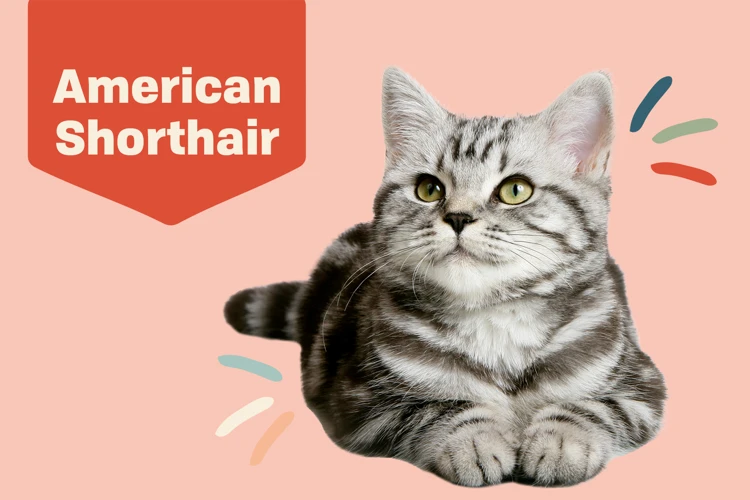
As feline enthusiasts, we can’t help but compare different cat breeds and appreciate the unique traits they each possess. In this section, we’ll explore the differences between the European and American Shorthair cats. These two breeds share a common ancestry, but have developed their own distinct traits over time. Let’s take a closer look at their physical and behavioral characteristics, as well as their recognition and standards in the cat breeding community.
Physical and Behavioral Differences
The physical and behavioral differences between European and American Shorthair Cats are quite distinct. Here are some notable differences to consider:
Physical Differences:
- Size: European Shorthair Cats tend to be smaller in size, weighing around 9-12 pounds, while male American Shorthairs can reach up to 15 pounds.
- Head: European Shorthairs have a rounder head shape with a more defined forehead and shorter snout. American Shorthairs have a square-shaped head with a longer snout.
- Coat: Europeans Shorthairs have a more diverse coat type and pattern, while American Shorthairs are bred to have a specific silver pattern, among others.
- Body: The European Shorthair is generally more active, with a slender body, while the American Shorthair is more muscular and stocky.
Behavioral Differences:
- Temperament: European Shorthairs are known to be more independent and reserved than the sociable and friendly American Shorthairs.
- Activity Level: As previously mentioned, European Shorthairs are generally more active whereas American Shorthair cats tend to be more laidback.
- Sensitivity: American Shorthairs are known for their thick skin and are less sensitive to touch compared to European Shorthairs who can be more sensitive.
- Sounds: European Shorthairs are known to have a broader range of vocalizations than American Shorthairs, who tend to be quieter.
It is important to note that although these differences exist, every cat has its unique personality and should be judged on an individual basis.
Breed Standards and Recognition
The breed standards set forth by various cat associations describe the ideal physical and behavioral characteristics of a particular breed, and serve as a guide for breeders and judges. The European Shorthair and American Shorthair have distinct breed standards that differentiate them from other cat breeds.
European Shorthair Breed Standards:
- The European Shorthair is a medium-sized cat with a sturdy, muscular build.
- They have a short, dense coat that comes in a variety of colors and patterns.
- Their eyes are large and round, and can be a variety of colors including green, blue, and gold.
- They have a friendly, playful temperament and are known for their hunting abilities.
- Their breed standard is recognized by several cat associations including the World Cat Federation and the International Cat Association.
American Shorthair Breed Standards:
- The American Shorthair is also a medium-sized cat with a muscular build, but is slightly larger than the European Shorthair.
- Their coat is also short and dense, and can come in a variety of colors and patterns.
- Their eyes are large and expressive, and can be green, gold, copper, or blue.
- They have a gentle, affectionate temperament and are adaptable to a variety of living situations.
- Their breed standard is recognized by multiple cat associations including the Cat Fanciers’ Association and The International Cat Association.
While both breeds share some similarities in their physical appearance and temperament, their distinct breed standards ensure that they are recognized as separate breeds.
Receiving recognition from cat associations is important for breeders as it allows them to show and breed their cats, and for owners to compete in cat shows or have their cat participate in breeding programs. It also serves as a way to maintain breed standards and continue to improve the breed through selective breeding practices.
Both the European Shorthair and American Shorthair have unique characteristics that make them beloved by many cat enthusiasts, and their distinct breed standards ensure that their individual features are preserved and recognized by cat associations.
Crossbreeding with other Cat Breeds
As breeders sought to enhance the characteristics of European and American shorthair cats, many began crossbreeding with other cat breeds to achieve new traits and appearances. The introduction of Persian, Siamese, and exotic shorthair cats brought about new adaptations in the shorthair breed that continue to shape their evolution today. Let’s explore the crossbreeding of these cats and the impact it has had on their development.
Persian Cats
When it comes to crossing breeds with American Shorthair Cats, Persian Cats have been a popular choice for breeders. This is because of their stunning long hair, sweet disposition, and distinctive features. Below are some of the characteristics that sets the Persian Cats apart from other cat breeds in crossbreeding:
- Physical Appearance – Persian cats have a round head and short snout. They are known for their thick fur which comes in various colors, from solid black to pure white. They have large eyes that are set far apart on their flat faces, giving them a unique appearance that many find irresistible.
- Temperament – Persian cats are well-known for their docile, affectionate and sweet personalities. They are perfect for families with children and other pets, as they are gentle and calm animals that love to be around humans.
- Compatibility – When bred with American Shorthair Cats, Persians usually produce kittens with thick and long hair. Their traits mesh well with American Shorthair Cats’ friendly, easygoing dispositions, resulting in a playful, loving cat that is perfect for families.
- Health Concerns – Persian cats are known for their unique skull structure which can create health issues, such as breathing problems and dental issues. It is important for breeders to be aware of these concerns when breeding Persian Cats with American Shorthair Cats to ensure the health and well-being of the kittens.
Breeding American Shorthair Cats with Persian Cats has been a successful venture for producing healthy, beautiful kittens with lovely temperaments. It is essential for breeders to choose the right match to avoid genetic health concerns and create a happy, healthy litter.
Siamese Cats
Siamese cats are a popular breed known for their unique appearance and personality. They originated in Thailand (formerly known as Siam), where they were highly revered and kept as regal pets by members of the royal family. Here’s a closer look at how Siamese cats have influenced the ancestry of American Shorthair cats:
Physical Characteristics
Siamese cats have very distinct physical features that set them apart from other breeds. They are known for their sleek, slender bodies, large ears, and vibrant blue eyes. American Shorthair cats also have a lean and muscular build, but their eyes are typically green, gold, or copper. However, Siamese cats and American Shorthairs do share some color patterns, such as the classic “pointed” pattern with darker coloring on the face, paws, and tail.
Behavioral Traits
Siamese cats are often extroverted and energetic, known for their vocalizations and love of attention. They also have a reputation for being intelligent and curious, as well as having a strong bond with their owners. American Shorthairs, on the other hand, are generally more laid-back and independent, although they still enjoy the company of their families.
Crossbreeding with American Shorthair Cats
The Siamese cat’s popularity and unique traits have made it a popular choice for crossbreeding with other breeds, including the American Shorthair. The resulting cats are typically called “Siamese-American Shorthair crosses” or simply “Siamese Shorthairs.”
These cats are often a mix of the Siamese’s pointed coat pattern and the American Shorthair’s sturdy build and broader facial features. They may also inherit the Siamese’s vocal tendencies and high energy levels.
Recognizing Siamese-American Shorthair Crosses
While crossbreeding is not officially recognized by most cat breed registries, some breeders specialize in producing Siamese-American Shorthair crosses. To distinguish these cats from purebred Siamese or American Shorthair cats, breeders may use a variety of terms such as “Siamese Shorthair,” “Siamese mix,” or “pointed shorthair.”
Siamese cats have had a significant influence on the ancestry of American Shorthair cats through crossbreeding. While the resulting Siamese-American Shorthair crosses are not officially recognized as a distinct breed, they exhibit a unique combination of physical and behavioral traits inherited from both parent breeds.
Exotic Shorthair Cats
Exotic Shorthair cats are a relatively new breed that was developed in the 1960s by crossing American Shorthair cats with Persian cats. This crossbreeding was originally intended to create a Persian-type cat with the easy-care coat of an American Shorthair. Exotic Shorthair cats have inherited several traits from their Persian ancestors, including their flat and broad face, round and large eyes, and short, densely packed fur.
Physical Characteristics:
Exotic Shorthair cats have a compact and muscular body with a short, thick neck and a broad chest. Their legs are short and sturdy, and their paws are large and round. Exotic Shorthairs have a short, dense coat that can come in a variety of colors, including solid colors, smoke, tabby, and bi-colors.
Behavioral Characteristics:
Exotic Shorthair cats are known for their affectionate and friendly personality. They are social cats that enjoy spending time with humans and are known for their playful and curious nature. Exotic Shorthairs are also known for their intelligence and are quick to learn new commands and tricks.
Training and Care:
Exotic Shorthair cats have a low-maintenance coat that only requires occasional brushing to remove dead hair and prevent matting. They also require regular nail trimming and teeth cleaning to maintain their overall health. Exotic Shorthairs are adaptable to different living environments and can thrive in small apartments or larger homes. They enjoy interactive play and benefit from having access to a scratching post or cat tree.
Exotic Shorthair cats have quickly gained popularity due to their unique appearance and charming personality. Their crossbreeding with American Shorthair cats has resulted in a cat that is an excellent family pet and easy to care for.
Conclusion
After exploring the history, origination, and characteristics of European and American Shorthair Cats, it’s evident that the two breeds share a unique ancestry. European Shorthair Cats brought their adaptable nature, health, and hardiness to American cats, resulting in the development of American Shorthair Cats that are robust, intelligent, and loyal.
The breed has evolved over time, with changes to their appearances, temperaments, and habits. Nonetheless, their unyielding spirit has endured through the years, making them a popular choice among cat owners.
Crossbreeding with other cat breeds has created hybrids with striking physical features and delightful personalities. However, it’s essential to note that these mixes should be planned and ethical.
Overall, European and American Shorthair Cats have contributed significantly to the best of the feline world, setting the standard for beauty, character, and resilience. They remain one of the most desirable cat breeds in the world today, and with their unique histories and delightful dispositions, it is not hard to see why.
Frequently Asked Questions
What is the difference between European shorthair cats and American shorthair cats?
European shorthair cats were originally bred for their hunting abilities and are generally smaller in stature, while American shorthair cats were bred for their friendly and affectionate personalities and are typically larger in size.
When did European shorthair cats migrate to America?
European shorthair cats were brought over to America during the colonial era, around the 1600s.
Can the influence of European shorthair cats be seen in other cat breeds?
Yes, the influence of European shorthair cats can be seen in a variety of cat breeds, including the British Shorthair, European Burmese, and Bombay cats.
What role did American shorthair cats play in American history?
American shorthair cats were highly valued by early American settlers as they helped protect their homes and food sources from mice and other pests.
How has the American Shorthair breed developed over time?
The American Shorthair breed has developed to become a friendly, social cat with a muscular build and a variety of coat colors and patterns.
What are some notable physical and behavioral differences between European and American shorthair cats?
European shorthair cats are generally smaller and more active, while American shorthair cats are larger and tend to have a more laid-back personality.
What is the breed standard for American shorthair cats?
The breed standard for American Shorthair cats includes a muscular build, a round face, and a coat that comes in a variety of solid colors or patterns.
What other cat breeds have been crossbred with American Shorthair cats?
American Shorthair cats have been crossbred with Persian cats to create the Exotic Shorthair breed and with Siamese cats to create the Oriental Shorthair breed.
What are some notable characteristics of the Persian breed?
The Persian breed is known for its long, thick coat and a flat face. They are also typically very affectionate and enjoy lounging around the house.
What are some notable characteristics of the Siamese breed?
The Siamese breed is known for its striking blue eyes and its loud, vocal personality. They are highly intelligent and social cats.

